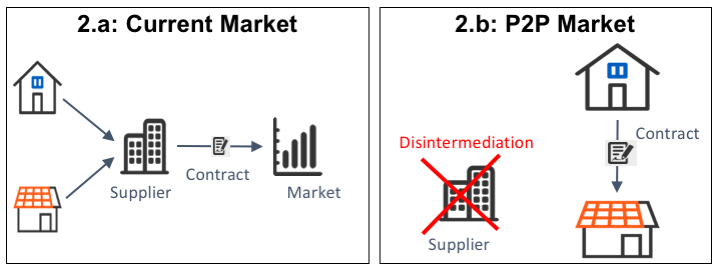Geography students from the University of Bristol spent February 2018 working on air, soil and water quality research projects for local organisations and community groups, including Bristol Green Capital Partnership members. Below is a summary of each project, the findings and next steps.
Bristol City Council – Bristol Urban Heat Island effect
Students investigated the effects of urban and suburban heat islands within Bristol compared to local rural areas. Urban Heat Island can impact human health, air and water quality and energy demand in the City with implications for future planning and city resilience. This project aimed to provide early groundwork for Bristol City Council in developing a better understanding of the Urban Heat Island in the city. The group used fifteen Tinytags across the city to collect temperature data and gained secondary data from local weather stations and building management systems. The group used a contour graph (see image below) to illustrate the UHIs they found, there was significant differences (c.1.3C) between rural sites, such as Fenswood Farm, Long Ashton compared to urban sites in close proximity, such as Hotwells Road. Bristol City Council will be using this data and other insights generated through participation in the project to inform i) the co-development of an urban temperature monitoring network and ii) further research into the Urban Heat Island effect.
Malago Valley Conservation Group – water pollution in the River Malago
Students investigated how water quality varied along the River Malago in Bishopsworth and what biological impact the dam has on microplastics and pollution in the river. Initially the group collected GPS data to map the river course and used water quality samples from 40 sites along the river to record nutrient, chlorophyll and microplastic data. The team found that some microplastic build up was evident before dams and weirs along the river and nitrate concentrations increased downstream through nitrification which suggests there may be impacts on the ecology of the river. Overall the river was found to be relatively healthy according to DEFRA and Environment Agency data, but there were recommended actions to protect its health in the future. The Malago Valley Conservation Group will be using the findings to plan conversation work programmes with their volunteers.
Bristol Avon Rivers Trust – water pollution in Three Brooks Lake
Students investigated the Three Brooks Lake and accompanying urban brooks in North Bristol to see if there was a difference in pollution levels entering the lake from two brooks from separate local residential areas. The group collected twenty water samples from the site and secondary data from the Environment Agency to examine variations in the pH, nutrient concentrations, turbidity (cloudiness of the water) and microplastics levels at the site. The findings suggested that there is likely to be a difference in the water quality of the two brooks and that the lake may be a sink for water pollution in the area. The Three Brooks Nature Reserve group will use the findings to support the development of a local management plan and the Bristol Avon Rivers Trust will be using the findings to contribute to their existing knowledge base for the catchment and to search for funding to develop the research further and to undertake any necessary improvements.
Friends of Badock’s Wood – wildflower cultivation in Badock’s Wood
Students investigated the soil conditions in Badock’s Wood to support the cultivation of wildflower meadows. The group collected soil cores from three meadows and a control meadow to analyse the soil moisture and organic matter content in the lab. Most wildflower species prefer calcareous soils (>15% calcium) with low phosphorous and high nitrogen content to grow optimally. Findings showed that two meadows have calcareous soils and two were on the borderline, all meadows had low phosphorus and low nitrogen content. In the present conditions, although some wildflowers do grow, the soil isn’t optimal to sustain the growth of many species but measures could be taken to improve the soil and more robust wildflowers could be selected to cope with soil conditions. The Friends of Badock’s Wood will be using the findings to revise their management plan for the site.
Dundry and Hartcliffe Wildlife Conservation Group – water pollution in Pigeonhouse stream tributaries
Students investigated water quality variances in five tributaries of the Pigeonhouse stream in Hartcliffe and whether this is influenced by land use in the area. The group collected samples to analyse the pH, nutrient content and temperature of the streams. The findings showed that the tributaries were healthy and unlikely to be contributing to water pollution levels in the Pigeonhouse stream and further downstream in the River Malago. The group suggested that high levels of nitrate in one tributary and Pigeonhouse stream were likely to be a result of run-off from neighbouring fertilised agricultural fields. E. Coli was prolific in all areas, the source of this will be a subject for future students to investigate. Dundry and Hartcliffe Wildlife Conservation Group will present the findings to the local neighbourhood partnership group.
Dundry and Hartcliffe Wildlife Conservation Group – effects of urban development and refuse on the Pigeonhouse Stream
Students investigated water quality along the Pigeonhouse stream in Hartcliffe. The group collected water samples to analyse for pH, nutrient content, turbidity and microplastic levels in the stream. Findings showed that microplastic pollution increased and turbidity (water cloudiness) decreased downstream as urbanisation increased. Ammonia and nitrogen concentrations were found to be high in the stream, but average compared to other streams in the region and within DEFRA safety standards. In-flow pipes from the surrounding urban areas are likely to be influencing the water quality in the stream. Dundry and Hartcliffe Wildlife Conservation Group will use the report to work with Bristol Waste to reduce fly-tipping in the area and with the local neighbourhood partnership to develop strategies to reduce pollution from the in-flow pipes.
Friends of Bristol Harbourside Reed Bed – impacts of reed beds on water quality in Bristol Floating Harbour
Students investigated spatial variation in water quality across the reed bed. The group collected twenty-one water samples and analysed for E.Coli, heavy metals, pH and nutrient content. Findings showed usual levels of heavy metals, except for zinc which was ten times higher than expected. There was no evidence that the reed bed influenced nutrient concentrations or pH levels, but this may be different if the research was conducted in summer during peak growing season. High levels of chlorophyll were found over the reed bed which can result in algae blooms. The group recommended that the reed beds should be cut back annually in autumn, this will reduce the amount of dead plant matter in the water to maintain healthy levels of zinc and chlorophyll in the reed bed. Friends of Bristol Harbourside Reed Bed will be using the findings to inform their management plan of the reed bed.
Friends of Bristol Harbourside Reed Bed – the health of the Bristol Floating Harbour reed bed
Students investigated concentrations of heavy metals and microplastics in the reed bed which would impact the reed bed ecology. The group collected ten sediment samples and five reed samples to test in the lab. Findings showed usual nitrate and phosphate levels, but zinc and potassium levels were higher than in comparable rivers which may be due to houseboats dumping excrement in the water. Microplastics were prolific in the sediment samples and identified as a major pollutant in the reed bed. The reed beds were filtering some pollutants in the water, particularly potassium, but these will re-enter the ecological system if the reeds are left to die back. The group recommended that reeds were cut back annually to reduce pollutants in the water. Friends of Bristol Harbourside Reed Bed will be using the findings to inform their management plan of the reed bed.
Bristol Zoo – air pollution at Bristol Zoo
Students investigated CO2 levels as an indicator of air pollution levels at Bristol Zoo. The group collected data using CO2 probes and gas samples at five sites at Bristol Zoo and two control sites at Fenswood Farm, Long Ashton and Bear Pit Roundabout, City Centre. The analysis accounted for environmental factors such as temperature and windspeed. Findings showed that air pollution was higher at the boundaries of Bristol Zoo than in the centre, but not as high as in the city centre. The group suggested further investigations into the impact of the high boundary wall and roadside vegetation on air pollution at Bristol Zoo would be useful. Bristol Zoo will be using the findings to as a baseline for more research into air pollution at the site.
Narroways Millennium Green Trust
Students investigated the impacts of firepits on soil pollution and compaction at the Narroways Hill conservation site in St Werburghs. The group collected twenty soil samples to test in the lab. Findings showed that soil compaction was high in some areas of the site, but no evidence linked this to firepits at the site. Soil moisture was found to increase further from the firepits. There was not significant evidence to show heavy metal pollutants at the sites, except for arsenic which the group are investigating further. Narroways Millennium Green Trust will be using the findings to inform public communications around fires at the site.
———————-
This blog is written by Amy Walsh from Skills Bridge. If your organisation would benefit from similar research, please email amy@bristolgreencapital.org.
Read other blogs in this Green Great Britain Week series:
1. Just the tip of the iceberg: Climate research at the Bristol Glaciology Centre
2. Monitoring greenhouse gas emissions: Now more important than ever?
3. Digital future of renewable energy
4. The new carbon economy – transforming waste into a resource
5. Systems thinking: 5 ways to be a more sustainable university
6. Local students + local communities = action on the local environment












